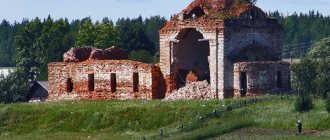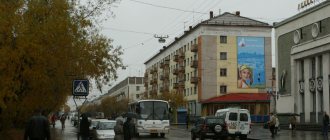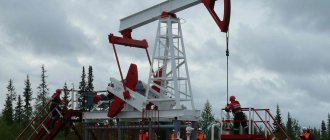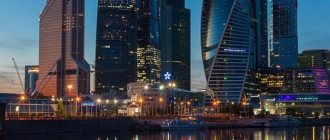About the city of Sosnogorsk
Sosnogorsk (in Komi Sӧsnagort) is a city (since 1955) in the Komi Republic of the Russian Federation, the administrative center of the Sosnogorsk municipal district.
Geographical position
The city of Sosnogorsk belongs to the Pechora basin and covers an area of about 25 sq. km. Located in the geographical center of the Republic.
The city is located on the left bank of the Izhma River (Pechora basin), 345 km from Syktyvkar, 15 km from Ukhta.
The territory of the Sosnogorsk municipal district is located in the central part of the Komi Republic. It borders on the territories of Vuktyl, Pechora, Ukhta, Izhemsky district, Troitsko-Pechora district and Ust-Kulomsky district.
The area is located on a gently sloping, slightly hilly plateau, dissected by rivers and streams of the Izhma River basin. Gley-podzolic and podzolic-boggy soils predominate. The main water artery of Sosnogorsk is the river. Izhma. Its largest tributaries are the Ayuva, Ukhta, Syuzyu, Upper and Lower Odessa. The Lemyu and Velyu rivers (the Pechora River basin) originate in the Sosnogorsk region. The share of wetlands is 13% of the total area.
Natural resources
The total area of the forest fund (as of 2003) is 1,619 thousand hectares, including 1,353.5 thousand hectares covered with forest with a total stock of wood per root of 104 million m³ or 3.8% of the total wood stock of the republic. The bulk of the reserves are coniferous species (81%). The forest cover of the region is 84%.
Forests belong to the subzones of the middle and northern taiga. Coniferous species predominate, with birch and aspen also found. The forests are inhabited by moose, squirrels, partridges, wood grouse, black grouse and hazel grouse. The species composition of fish is diverse.
Protected natural areas and objects include the Gazhayag and Sedyu reserves with coniferous forests and reindeer mosses, located in the upper reaches of the Izhma River. The Lemew River with its beautiful oxbow lakes, where fish are found, is considered a natural water monument.
Among the mineral resources that the region has are fuel and energy - oil, gas, oil shale. There are significant reserves of unique peat with a wide range of uses, mineral medicinal water, gypsum, etc.
The region has the largest base of hydrocarbon raw materials. 26 deposits have been discovered, of which 16 are being developed, 10 are in exploration. Of the discovered ones, two deposits belong to the category of large ones, these are Pashninskoye and Zapadno-Tebukskoye, and two are classified as medium-sized ones - North-Savinoborskoye and Dzhierskoye).
Deposits of gypsum, bitumen, sand and gravel mixtures, and sand for construction work have been identified in the Sosnogorsk region. Two deposits have been explored for fresh underground water reserves - Ayyuvinskoye and Nizhneodesskoye, the latter is not exploited.
Climate
- Average annual air temperature - −1.5 °C
- Relative air humidity - 75.4%
- Average wind speed - 3.0 m/s
Early history
Back in the Stone Age (7-11 thousand years ago), the territory of the Sosnogorsk region was inhabited by primitive communities, and in the early Middle Ages (at the turn of the 1st-2nd millennium) here, in the vicinity of the village of Ust-Ukhta, there was a primitive settlement with an earthen rampart.
First half of the twentieth century
The current villages of the Sosnogorsk region were founded in the late 18th - first half of the 19th centuries. The history of the villages and city of Sosnogorsk begins with the stage of industrialization of the 1930-1940s.
In 1937, a plan for the construction of the North Pechora main line “Konosha – Kotlas – Vorkuta” was adopted, and this was associated with the start of construction in 1939 of the Izhma station, which in 1942 became the center of one of the five branches of the railway in Komi.
Since November 1945, near the working village of Izhma, a new village of Sosnovka has been built - the gas processing center of the North.
From the mid-twentieth century to the present day
On December 1, 1955, the Presidium of the Supreme Soviet of the RSFSR approved a Decree on the formation of the city of Izhma, renamed Sosnogorsk in 1957, on the basis of these two settlements.
On November 29, 1979, the Presidium of the Supreme Soviet of the RSFSR separated a new district from the Ukhtinsky district - Sosnogorsky - with a territory of 16,481 thousand km² (3.9% of the territory of Komi) and a population of about 60 thousand people (5.3% of the republic’s inhabitants). It was the 20th district in the Komi Autonomous Soviet Socialist Republic.
In 2001, the Sosnogorsk branch (since 2011 - Sosnogorsk region) of the Northern Railway became a monopoly throughout the entire territory of the Komi Republic and partially in the Arkhangelsk region. Sosnogorsk, one of the economic centers of the Northwestern District, stretches for almost 10 km along the Izhma and Ukhta rivers, carrying their waters to Pechora.
As part of the Barentskomur project, it is planned to build a railway from Sosnogorsk to the village of Indiga, located at the mouth of the Indiga River, which flows into the Barents Sea.
Population
City:
- 1959 – 15,799 people
- 1972 – 24,688 people
- 1979 – 27,021 people
- 1989 – 30,439 people
- 2002 – 29,587 people
- 2009 – 28,103 people
- 2010 – 27,757 people
- 2012 – 27,473 people
- 2013 – 27,326 people
- Urban settlement Sosnogorsk:
- 2002 – 52,486 people
- 2009 – 49,178 people
- 2010 – 28,139 people
- 2011 – 28,079 people
- 2012 – 27,854 people
- 2013 – 33,088 people
Culture
The annual Republican Festival of Jazz, Rock and Popular Music has been held in Sosnogorsk since 1991. The last, XXth in a row, took place in July 2013, where it brought together many representatives of jazz, pop and rock culture of the republic. Festival headliner: Vyacheslav Butusov.
Healthcare
The district's healthcare system is represented by three municipal hospitals and 14 first-aid posts. The hospital's capacity is 204 beds. Also in the district there is a non-governmental health care institution “Departmental Hospital”.
Economy
The basis of the region's industry is made up of such enterprises as: Gazprompererabotka LLC, Sosnogorsk branch of the Northern Railway. - branch of JSC Russian Railways, Sosnogorskaya CHPP. Also, these enterprises are the largest employers and, as a result, the main payers of personal income tax. In the district, 4 peasant farms and 32 personal subsidiary plots produce agricultural products.
Sport
Sports and fitness complex
Opened October 30, 2009. The sports complex was built with financial support (60 million rubles) from OJSC Gazprom as part of the Gazprom for Children project
Ice Palace "Star"
The dimensions of the ice field are 56x28 meters. The capacity of the site for mass skating is 120 people, the number of athletes simultaneously practicing on the ice is 64 people. The auditorium has a capacity of 200 seats. In addition, the two-story building houses locker rooms, showers, including for the disabled, rooms for judges, a gym, a choreography room, a cafeteria, a first-aid post, and parking for visitors to the skating rink.
Sports complex "Khimik"
Since 09/05/2012, the Khimik sports complex became the Gladiator martial arts club.
Universal sports complex of international class "Meteor"
The total amount of financing amounted to more than 196 million rubles. The funds were allocated from the republican budget as part of the implementation of the target republican program “Development of infrastructure for physical culture and sports in the Komi Republic for 2008-2013”, taking into account co-financing from the district budget in the amount of 2.6 million rubles. The complex includes a universal games room, a gym, a methodological classroom, 2 medical rooms, a guest room, and a cafeteria. The capacity of the complex is up to 600 people.
Transport
- Junction railway station Sosnogorsk of the Northern Railway.
- Ukhta Airport is located near the city.
Interesting Facts
December 6, 2007 – Sosnogorsk won the nomination “Best city of the Russian Federation in terms of economic indicators” in the “Small town” category.
Sosnogorsk: fountains, a “cheerful” fisherman and a bench of reconciliation
On the eve of the 95th anniversary of the Komi Republic and the 20th anniversary of Komiinform, as part of the Know Komi project, we continue to talk about different parts of our region. This time we will talk about the city of three fountains - Sosnogorsk. A city resident, honored traveler of Russia, member of the All-Russian public organization “Russian Geographical Society” Vyacheslav Kamashev told Komiinform about its “highlights”. By the way, our interlocutor’s portfolio includes travel to 66 constituent entities of the Russian Federation.
“Sosnogorsk district is the youngest municipality in the Komi Republic. Despite this, there are many attractions here. The city is formed from two villages - the industrial Sosnovka and the railway Izhma. Each part has buildings in the architectural style of Stalin times. One of these is the House of Children's Creativity and the area around it. The building belongs to the architectural style of the era of Stalinist constructivism. Surprisingly, in other cities of Komi it has not been preserved in its pure form,” our interlocutor said.
Near the square there is also a completely new architectural creation - the light and music “Fountain of Love”, built just three years ago. On hot summer days it attracts everyone who happens to be nearby. When you come to the fountain in the evening, you will see that its streams shimmer with all the colors of the rainbow.
However, today in this unique city there is not one, but three fountains, different in type and configuration.
The second of them is a pedestrian fountain in the Railwaymen's Square, located in the 5th microdistrict of Sosnogorsk. With the onset of summer and hot days, the fountain becomes a favorite place for children and youth. Walking along the asphalt, at the most unexpected moment you may find yourself... under refreshing water jets. By the way, such entertainment in Russia has been around for almost 300 years. The first comic fountains were made in Peterhof in 1723. They were benches. As soon as the walkers approached them, streams of water overtook the ladies and gentlemen.
Another unique fountain, “Pine Cone with a Squirrel,” according to the interlocutor, was opened in 2010 on National Unity Day. This is the most technically complex fountain in Sosnogorsk: in the center there is a forged pine cone. The pine tree, as the name suggests, is a symbol of the city. The cone weighs about 3 tons. An unusual addition to it is a charismatic squirrel eyeing the pine cone. Young people, seeing her, will probably remember the hero of the popular cartoon “Ice Age”.
Another attraction of Sosnogorsk is the monument to the “Leaking Wood Grouse”. Its weight is also more than 3 tons. There is already a belief among Sosnogorsk residents: you just have to think about the secret, rub the claw of the wood grouse’s right paw, and what you want will definitely come true! You will find out which claw to rub on the spot - it already shines from the diligent rubbing of the sufferers.
“Another monument that has become the architectural highlight of Sosnogorsk is the sculpture “Fisherman”. “I have never seen people who would indifferently walk past the sculpture: a good-natured smile, a hat tilted to one side, a kind squinting of the steel fisherman’s eyes - all this speaks of the breadth and openness of the soul of the local population,” says Vyacheslav. – By the way, speaking about the monument to the cheerful fisherman, one cannot help but mention the street on which it is located. Just recently I did some research and found out that Oplesnina Street is the greenest street in the city. It is on this street that the oldest residential building in Sosnogorsk is located, which was built in 1940. A selfie in front of a building that is still in excellent condition will also not leave your friends indifferent, unless, of course, you indicate that you took the photo in front of the oldest building in Sosnogorsk.”
The newest unique place appeared in Sosnogorsk last year - this is the family park “Yugyd Lun” (translated from Komi as “Bright Day”). This is a great relaxation area for people of all ages. The park opened its doors to vacationers in August last year, becoming a real gift for the city’s 60th anniversary.
Not far from the main entrance there is a cascading waterfall, a favorite place for selfies among park visitors. Throughout the park area there are picturesque water canals and wooden bridges, reminiscent of the continuous flow of the beautiful Komi rivers. From the central area of the Yugyd Lun park, as in many fairy tales, there are several paths, here there are sculptures of the Komi epic and Russian folk tales.
The main highlight of the park is the “Tree of Love”. This forged creation is the newest art object in Sosnogorsk. The tree trunk is made of small parts - symbolic wedding rings, which are united by the power of marriage and protect the newlyweds. The leaves on the branches are a kind of amulets that the newlyweds hang. Guests from all over the republic have already fallen in love with the tree. Perhaps soon a whole alley of “love” trees will grow in the park.
Another favorite “art object” of the townspeople is the reconciliation bench, located near the “Fountain of Love”, which we have already mentioned.
“This bench has long become a place of romantic meetings and long-awaited reconciliations for Sosnogorsk residents. However, you don’t have to be in a quarrel to sit on this bench. It is made in such a way that even if you sit at a distance from each other, you will soon find yourself close. And, of course, photographs taken at this place will be especially romantic. So hurry up to take unique selfies in our city!” - our interlocutor urged.
You can post a lot of photos using the “Very Black” tariff from Tele2. It includes 4 GB of internet. This volume is enough to download a couple of thousand high-quality images or send about 280 thousand messages on Viber. In addition, the tariff includes unlimited calls to Tele2 in the region, 300 minutes and 300 SMS to numbers of any operators in Russia. At the same time, calls to Tele2 Russia will remain free even if the package is exhausted. Subscription fee – 230 rubles per month.
As an advertisement
komiinform.ru






